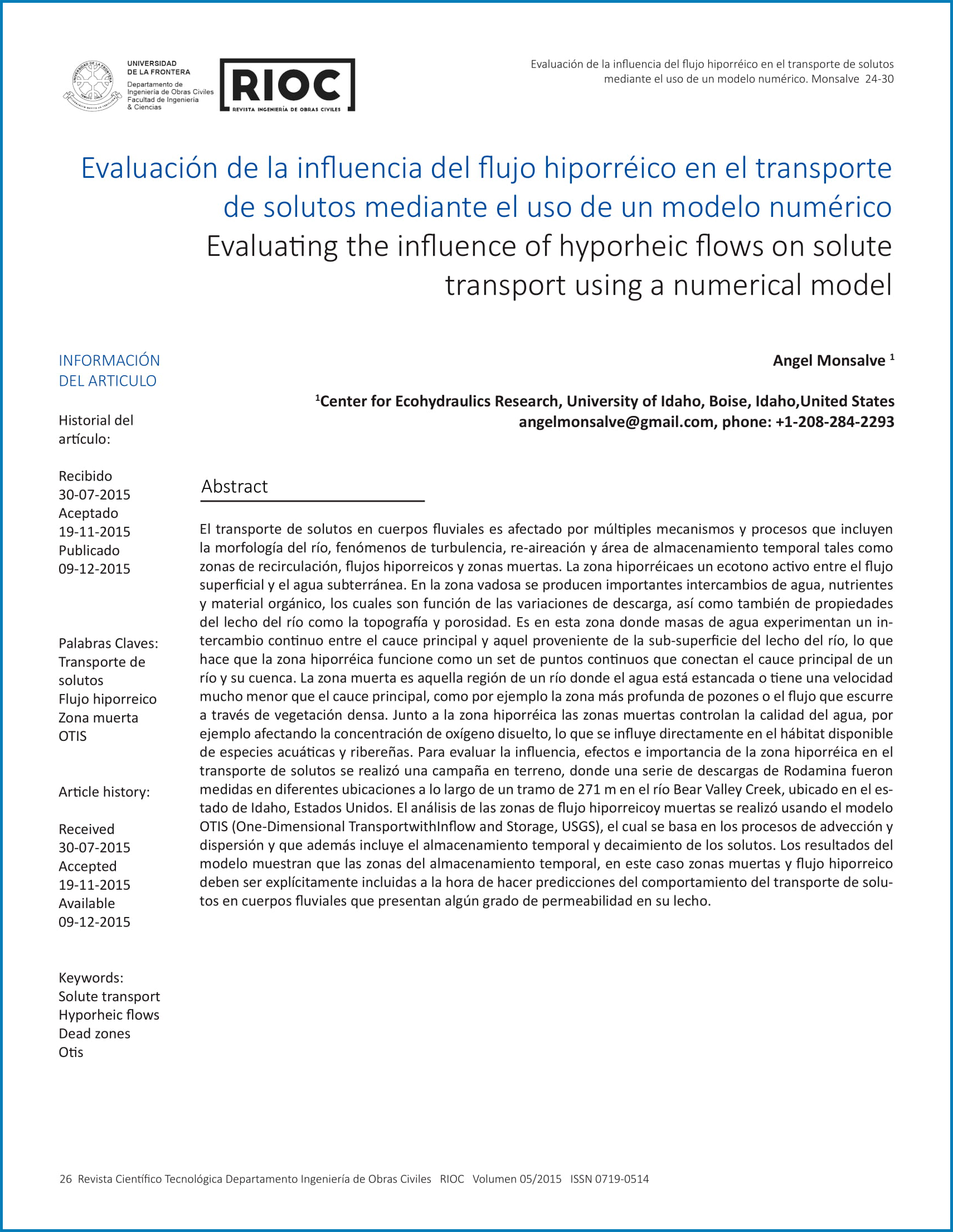Evaluating the influence of hyporheic flows on solute transport using a numerical model
Keywords:
Solute transport, Hyporheic flows, Dead zones, OTISAbstract
Transport of solutes in streams are affected by multiple mechanisms and processes that include river morphology, turbulence, reaireation, and transient storage areas which include re-circulation zones, hyporheic flows and dead zones. The hyporheic zone is an active ecotone between the surface stream and groundwater. In this zone important exchanges of water, nutrients, and organic matter occur in response tovariations in discharge and bed topography and porosity. Is in this zone where water that is flowing in the stream channel flows into the subsurface materials of the streambed and then returns to the main stream, making the hyporheic zone a continuous link between the stream‘s channel and catchment. The dead zone is defined as a region of static or slowly moving water (i.e. backwater eddies, stagnant water at the bottom of pools, and flow through vegetation). Dead and hyporheic zones play a key role in controlling the water quality, for instance affecting the stream dissolved oxygen concentration, which ultimately controls the habitat suitability for a number of aquatic and riparian species. To evaluate the influence, effects and importance of hyporheic zone in the transport of solutes a field camping was conducted, where a series of Rhodamine injections were monitored in along a 271 m reach in Bear Valley Creek, ID, USA. The analysis of the dead zones and hyporheic flows was performed using the OTIS Model (One-Dimensional Transport with Inflow and Storage, USGS) where the governing equation underlying the model is the advection- dispersionequation with additional terms to account for transient storage, and first-order decay. Results showed that the includingtransient storage areas, in this casehyporheic and dead zones must be explicitly included in order to describe how solutes are transported in a stream whose bed present some degree of permeability.
Downloads

Downloads
Published
How to Cite
Issue
Section
License
The authors who publish in this journal accept the following conditions:
- The authors retain the copyright and assign to the magazine the right of the first publication, with the work registered with the Creative Commons attribution license, which allows third parties to use the published information whenever they mention the authorship of the work and the First publication in this journal.
- Authors may make other independent and additional contractual arrangements for non-exclusive distribution of the version of the article published in this journal (eg, include it in an institutional repository or publish it in a book) as long as it clearly indicates that the work Was first published in this magazine.
- Authors are encouraged and encouraged to publish their work on the Internet (for example, on institutional or personal pages) before and during the review and publication process, as it can lead to productive exchanges and a greater and faster dissemination of work Published (see The Effect of Open Access).







